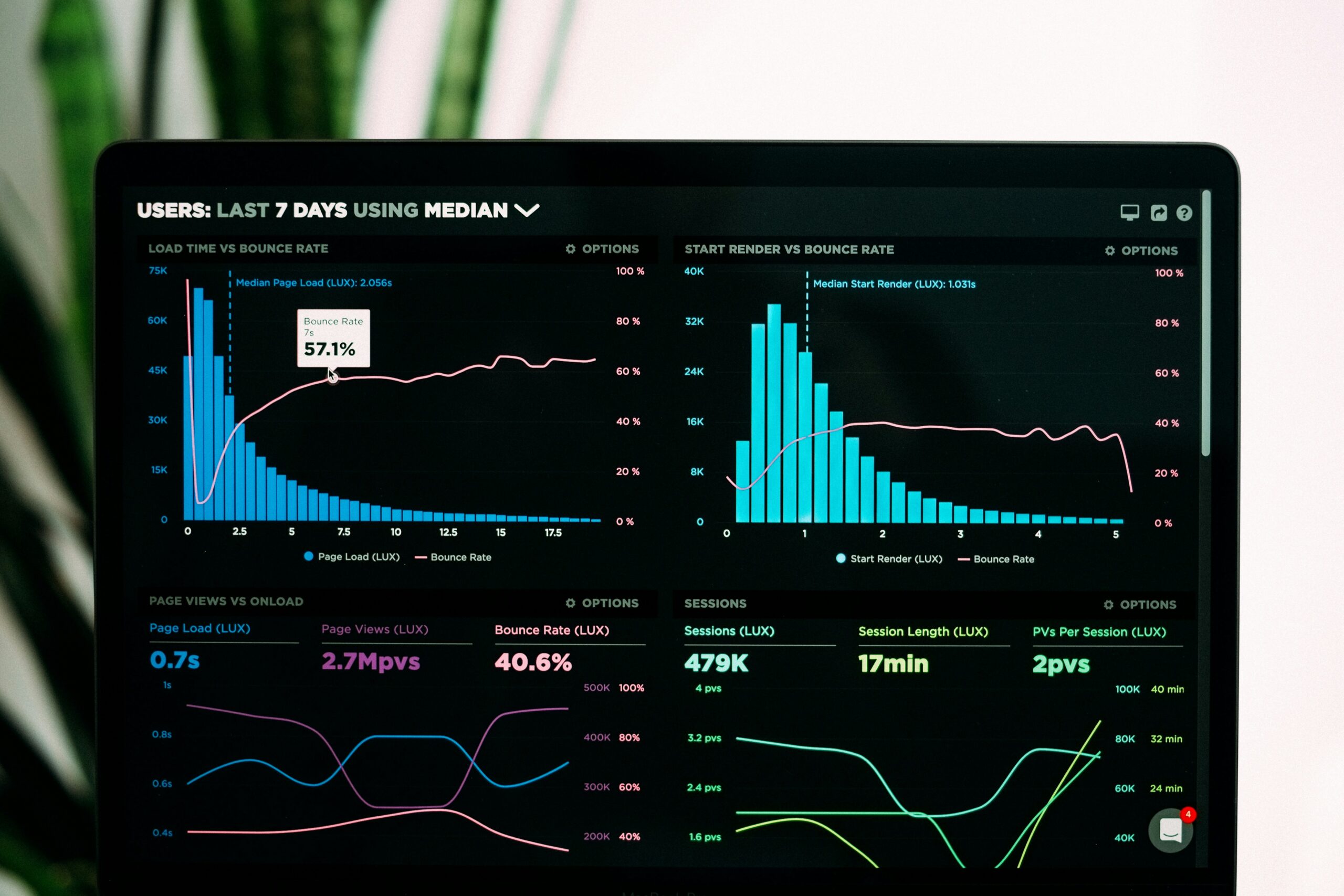Why Data Analysis is Important for Businesses
In today’s rapidly evolving digital landscape, data analysis has become a cornerstone for businesses seeking to thrive in competitive markets. The ability to convert raw data into actionable insights not only empowers organizations to make informed decisions but also enhances their operational efficiency, customer understanding, and overall strategic direction. In this article, we will delve into why data analysis is important for businesses, exploring its key benefits, methodologies, and implications for growth.
What is Data Analysis?
Data analysis involves the systematic process of collecting, cleaning, interpreting, and transforming data to extract meaningful insights. This practice is vital for organizations as it allows them to:
– Understand market trends
– Improve customer experiences
– Optimize operational efficiencies
According to research by IBM, businesses that adopt data-driven decision-making are five times more likely to make faster decisions than their competitors. This article aims to explore the significance of data analysis in today’s business environment, highlighting its impact on decision-making, operational efficiency, and customer understanding.
The Importance of Data Analysis for Businesses
Understanding why data analysis is important for businesses hinges on recognizing its multifaceted advantages. Below, we explore these benefits in detail.
1. Informed Decision-Making
One of the primary reasons data analysis is crucial is its ability to facilitate informed decision-making. With access to comprehensive data sets, organizations can:
Evaluate Current Performance: Analyze existing performance metrics to understand strengths and weaknesses.
Predict Future Outcomes: Employ statistical models to forecast trends and anticipate challenges.
Mitigate Risks: Identify potential risks through data analysis, enabling proactive measures to minimize impact.
According to a study by McKinsey, organizations that leverage data analytics can increase their productivity by 20-25%. By relying on empirical evidence rather than intuition, businesses can make strategic decisions that align with their long-term goals.
2. Enhanced Operational Efficiency
Data analysis significantly contributes to operational efficiency, enabling organizations to:
Identify Bottlenecks: Uncover inefficiencies in production and supply chain processes.
Streamline Processes: Optimize workflows to reduce costs and enhance productivity.
Curb Manual Labor: Automate repetitive tasks, freeing up resources for higher-value activities.
A report from Deloitte indicates that companies utilizing data analytics to optimize operations can achieve substantial productivity gains. By refining processes based on data insights, organizations can stay ahead of competitors and meet customer demands more effectively.
3. Better Customer Understanding and Personalization
In today’s consumer-driven market, understanding customer behavior is crucial for fostering loyalty and driving sales. Data analysis helps businesses:
Segment Audiences: Group customers based on demographics and preferences to tailor marketing strategies.
Anticipate Needs: Analyze past purchasing behavior to predict future demands.
Improve Customer Experience: Customize products and services to meet individual customer needs.
Research from FullStory highlights that 62% of consumers are more likely to make purchases from brands that understand their preferences. By harnessing data analysis, businesses can enhance customer satisfaction, leading to increased retention and revenue.
4. Marketing and Sales Optimization
Effective marketing strategies are essential for driving sales growth. Data analysis empowers organizations to:
Craft Targeted Campaigns: Analyze customer behavior to design marketing messages that resonate.
Optimize Advertising Spend: Identify the most effective channels for reaching target audiences.
Predict Sales Trends: Utilize historical data to forecast future sales performance.
According to a study by Emeritus, companies that implement data-driven marketing strategies experience a fivefold increase in ROI compared to those that do not. By leveraging data insights, businesses can refine their marketing efforts and achieve greater success.
5. Competitor Analysis and Market Research
To maintain a competitive edge, businesses must understand their market landscape. Data analysis enables organizations to:
Evaluate Competitor Performance: Assess competitors’ strategies, pricing, and market presence.
Identify Market Trends: Stay updated on changes within the industry to adjust strategies accordingly.
Make Informed Decisions: Use data insights to drive strategic initiatives and respond to market shifts.
A study published by Semrush emphasizes that businesses conducting thorough competitor analysis can significantly improve their market positioning. By leveraging data analytics, organizations can proactively respond to industry changes and capitalize on emerging opportunities.
Data Analysis Methodologies
Understanding the methodologies involved in data analysis is essential for organizations seeking to implement effective strategies. Key methodologies include:
Descriptive Analysis
Descriptive analysis focuses on summarizing historical data to provide insights into what has occurred. It answers questions such as:
– What were the sales figures last quarter?
– How many new customers were acquired last month?
Tools like data aggregation and visualization techniques are commonly used in descriptive analysis to identify trends and patterns. For a deeper dive, check out our article on Data Analysis Types: A Comprehensive Guide۔
Diagnostic Analysis
Diagnostic analysis goes a step further by exploring the reasons behind specific outcomes. It answers questions like:
– Why did sales decline last quarter?
– What factors contributed to an increase in customer complaints?
Techniques such as data discovery and correlation analysis are employed to uncover the root causes of performance issues.
Predictive Analysis
Predictive analysis utilizes historical data and statistical models to forecast future outcomes. It addresses questions such as:
– What are the anticipated sales for next quarter?
– Which customers are likely to churn?
This methodology is invaluable for organizations looking to make proactive decisions based on data-driven insights.
Prescriptive Analysis
Prescriptive analysis provides actionable recommendations based on predictive insights. It answers questions like:
– What actions should we take to improve customer retention?
– How can we optimize our marketing strategy for better results?
By using optimization algorithms, organizations can identify the best courses of action to achieve their objectives.
Conclusion
The importance of data analysis in today’s business environment cannot be overstated. As organizations navigate increasingly complex market landscapes, leveraging data analytics is essential for making informed decisions, enhancing operational efficiency, and understanding customer needs. By adopting data-driven strategies, businesses can gain a competitive advantage, drive growth, and ensure long-term success.
FAQs
1. What is data analysis, and why is it important?
Data analysis is the process of collecting, cleaning, and interpreting data to extract meaningful insights. It is important because it enables businesses to make informed decisions, improve operational efficiency, and better understand customer behavior.
2. How can data analysis improve decision-making?
Data analysis provides organizations with empirical evidence that informs decision-making. By analyzing historical data, businesses can evaluate current performance, predict future outcomes, and identify potential risks.
3. What are the benefits of data analysis for businesses?
The benefits of data analysis for businesses include informed decision-making, enhanced operational efficiency, better customer understanding, optimized marketing strategies, and improved competitor analysis.
4. What methodologies are used in data analysis?
Common methodologies in data analysis include descriptive analysis, diagnostic analysis, predictive analysis, and prescriptive analysis. Each methodology serves a unique purpose in extracting insights from data.
5. How can businesses use data analysis to gain a competitive edge?
By utilizing data analysis, businesses can make data-driven decisions, optimize operations, and tailor their offerings to meet customer needs. This strategic approach helps organizations stay ahead of competitors and adapt to market changes.
To harness the power of data analysis for your business, explore our comprehensive data analytics services. Whether you’re looking to optimize your operations, enhance customer experiences, or drive marketing effectiveness, we have the expertise to help you succeed. Contact us today to learn more!
—
External Resources:
1. For statistical data on data-driven decision-making, read this IBM report
2. For further insights into the benefits of data analytics, read this Deloitte report
Explore more blogs on Data Analysis Types, Tools and much more here.


